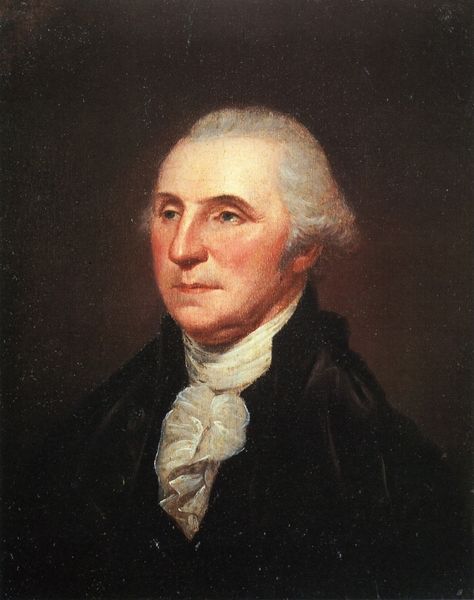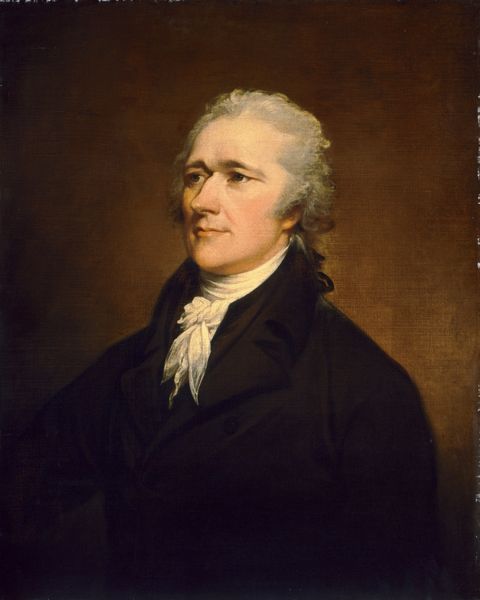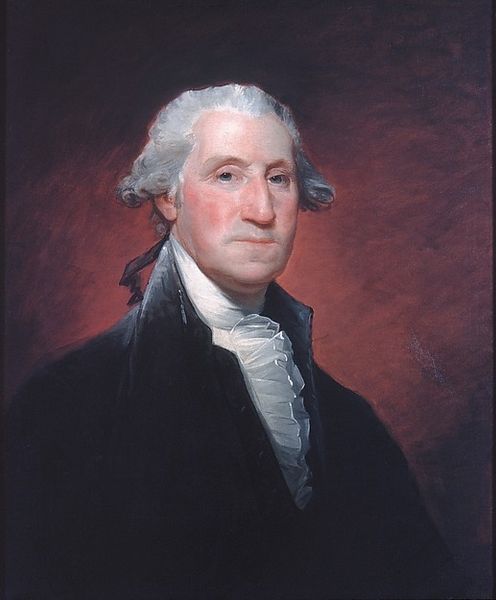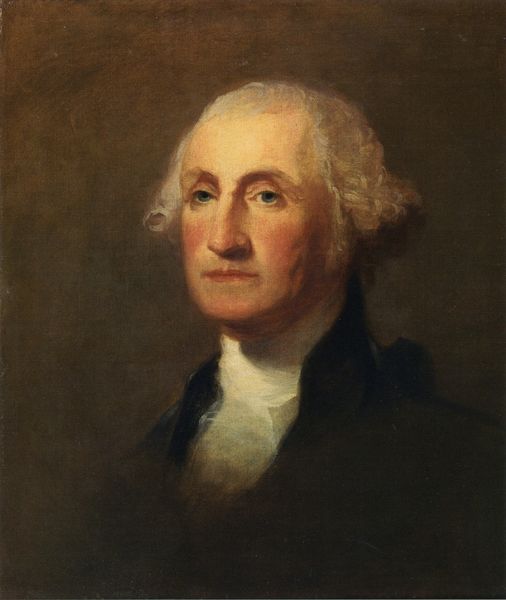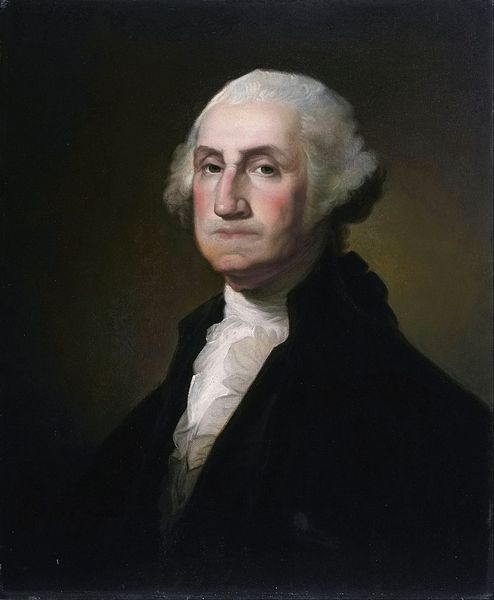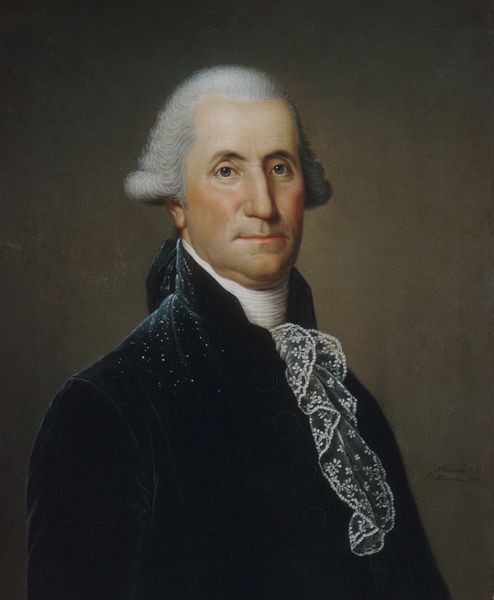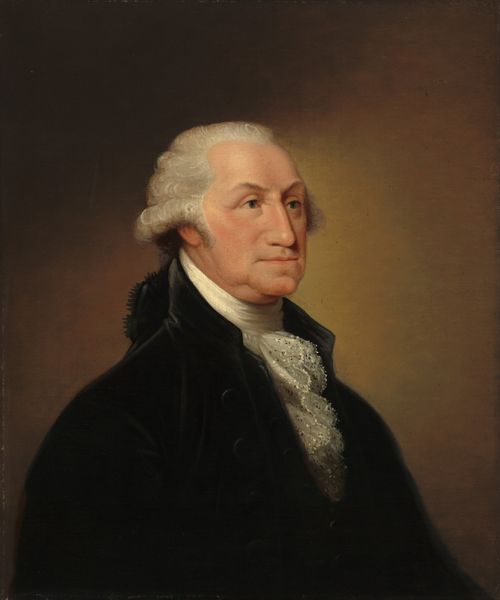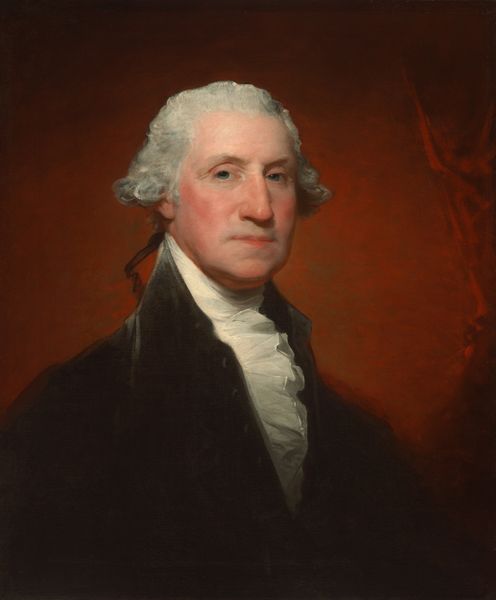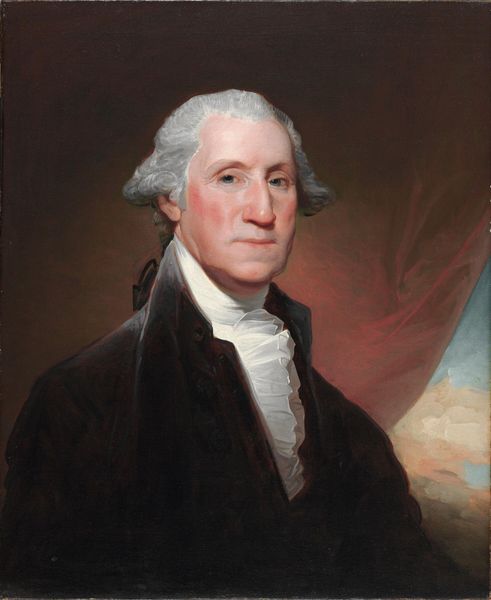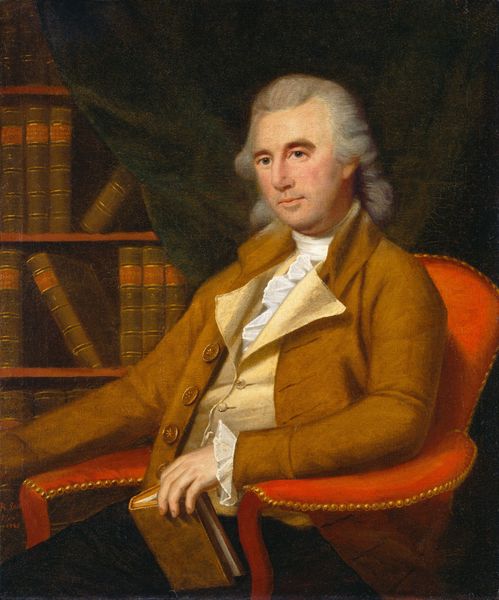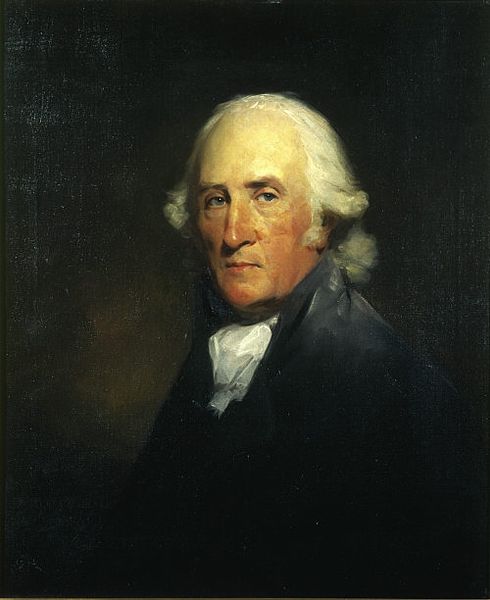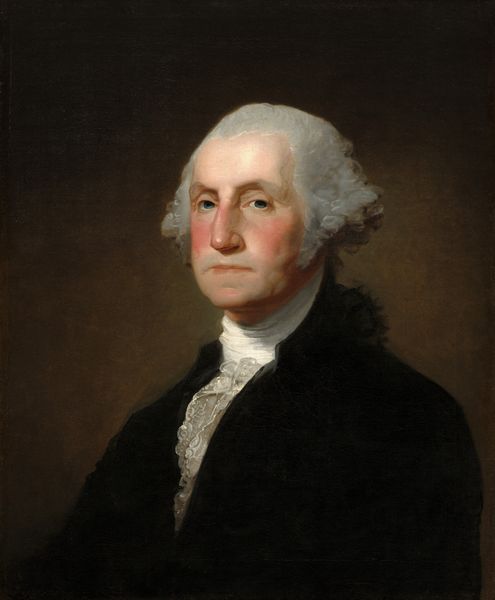
painting, oil-paint
#
portrait
#
neoclacissism
#
painting
#
oil-paint
#
history-painting
#
academic-art
Copyright: Public domain
Editor: Here we have Charles Willson Peale’s portrait of George Washington in oil paint, a powerful image. There's a certain gravitas, a weightiness to his gaze. How do you interpret this work, especially concerning its symbols and visual language? Curator: The portrait acts as a symbolic representation of Washington, but also of the burgeoning United States. What I see reflected, essentially, is a conscious crafting of cultural memory. Think about the symbols – his clothing is relatively understated for a head of state, suggesting humility and civic virtue, crucial for a new republic distancing itself from monarchy. Even his expression projects resolve. Does anything stand out to you? Editor: The ruffled collar does catch my eye. It seems almost… out of place against the otherwise stark simplicity. Curator: Exactly. The ruffles speak to the Neoclassical era's influence, harking back to Roman virtues, of course, but also conveying a softer, human side to the President. And how the artist creates emphasis. This softens Washington's stern image by emphasizing humanity. He is not just a ruler but a man with a story to tell through his representation. Editor: So the image balances strength with approachability, all through careful symbolic choices. Fascinating! Curator: Precisely. And that duality reflects the delicate balancing act the newly formed nation had to perform. It had to establish authority, but without replicating the tyrannical structures it had just overthrown. Editor: I never considered how much symbolism could be embedded in something that looks, on the surface, like a straightforward portrait. Thanks! Curator: It highlights how portraits can be far more than mere likenesses; they become vehicles for conveying ideology, memory, and cultural identity, all wrapped in symbolic imagery.
Comments
No comments
Be the first to comment and join the conversation on the ultimate creative platform.

